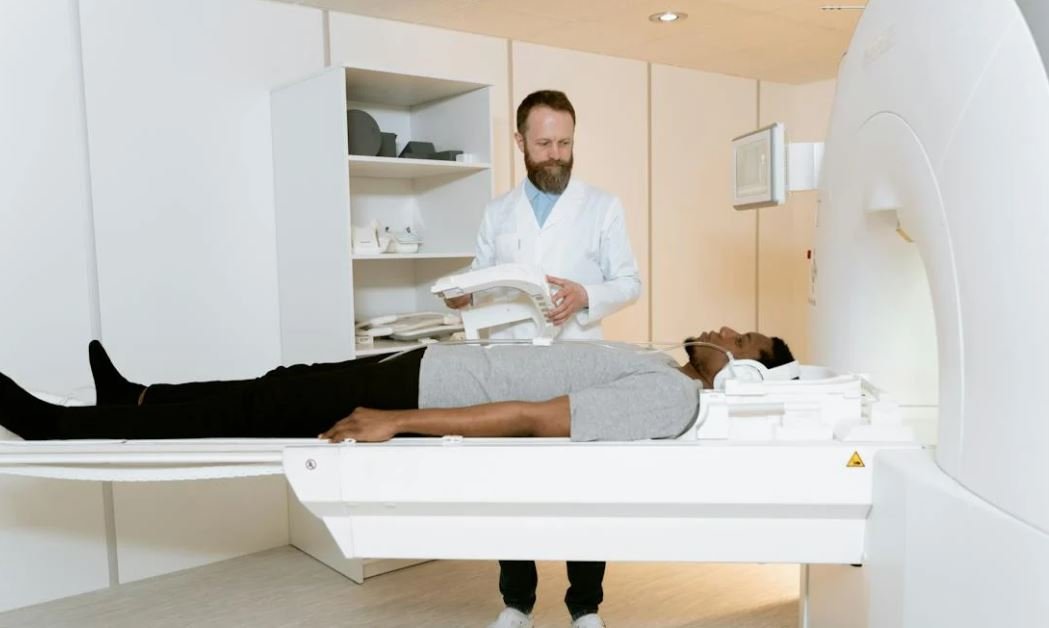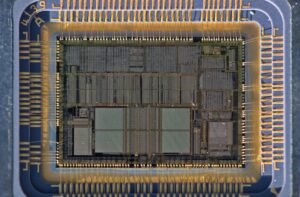SpaceX Dragon Missions
The SpaceX Dragon spacecraft is a reusable cargo spacecraft developed by SpaceX, an American aerospace manufacturer and space transportation company founded by Elon Musk.
Key Takeaways:
- SpaceX Dragon is a reusable cargo spacecraft developed by SpaceX.
- Elon Musk founded SpaceX with the goal of making life multiplanetary.
- Dragon is capable of autonomously docking with the International Space Station (ISS).
Development and Capabilities
The Dragon spacecraft was designed to transport both cargo and crew to the ISS. **Elon Musk** founded SpaceX with a goal **to make life multiplanetary**. The Dragon is capable of **autonomously docking** with the International Space Station, enabling the delivery and return of cargo, experiments, and supplies. It has undergone several iterations, with the Dragon 2 serving as a platform for crewed missions. The spacecraft features a **trunk** section that can carry unpressurized cargo and experiments.
SpaceX Dragon Missions
SpaceX has successfully executed several Dragon missions to resupply the International Space Station. The company has an agreement with NASA to conduct regular cargo resupply services under the Commercial Resupply Services (CRS) program. **One interesting mission is CRS-20 which marked the last flight of the original Dragon spacecraft design**.
DragonLab Missions
The DragonLab missions refer to **non-NASA related missions**. These missions are contracted by various entities and organizations to conduct scientific research in space. DragonLab offers an extended duration in space compared to the standard Dragon missions, allowing for longer experiments **such as testing the effects of microgravity on plant growth**.
Table: SpaceX Dragon Missions
| Mission | Launch Date | Payload Mass (kg) |
|---|---|---|
| CRS-20 | March 7, 2020 | 1977 |
| Crew-1 | November 15, 2020 | 0 |
| CRS-21 | December 6, 2020 | 2617 |
Crew Dragon Missions
SpaceX also utilizes the Dragon spacecraft for crewed missions. Crew Dragon, a variant of the Dragon spacecraft, is designed to transport astronauts from Earth to the International Space Station and back. **These missions mark a significant milestone in the United States regaining its ability to launch astronauts from its own soil**.
Table: Crew Dragon Missions
| Mission | Launch Date | Number of Crew Members |
|---|---|---|
| DM-2 | May 30, 2020 | 2 |
| Crew-1 | November 15, 2020 | 4 |
Dragon 2 Cargo Missions
Dragon 2 Cargo missions are focused on delivering essential supplies, scientific experiments, and equipment to the International Space Station. **These missions play a vital role in supporting ongoing research and maintenance of the space station**.
Table: Dragon 2 Cargo Missions
| Mission | Launch Date | Payload Mass (kg) |
|---|---|---|
| CRS-21 | December 6, 2020 | 2617 |
| CRS-22 | TBD | 2617 |
SpaceX Dragon missions have revolutionized space transportation by providing a reliable and reusable cargo spacecraft for resupplying the International Space Station. With its ability to autonomously dock and support both cargo and crew, Dragon has opened up new possibilities for scientific research and exploration beyond Earth. The ongoing missions, including Crew Dragon and Dragon 2 Cargo missions, continue to push the boundaries of our understanding of space.

Common Misconceptions
Misconception 1: SpaceX Dragon Missions are Manned Spaceflights
One common misconception about SpaceX Dragon Missions is that they are manned spaceflights, where humans are sent into space. However, this is not the case. SpaceX Dragon Missions are actually uncrewed missions, meaning there are no humans on board the spacecraft. They are primarily used to deliver cargo to the International Space Station (ISS) and return experiments and supplies back to Earth.
- SpaceX Dragon Missions are not crewed by astronauts.
- These missions are operated remotely from Earth.
- The absence of humans on board allows for more payload and volume capacity for cargo.
Misconception 2: SpaceX Dragon Missions are One-time Events
Another misconception is that SpaceX Dragon Missions are one-time events rather than recurring missions. In reality, SpaceX has developed a series of Dragon spacecraft, and these missions occur more frequently than people might think. The Dragon spacecraft is designed to be reusable, including both the cargo variant (Dragon 1) and the crew variant (Dragon 2). This allows for multiple resupply missions and potential crewed missions to the ISS.
- SpaceX regularly schedules Dragon Missions for cargo resupply to the ISS.
- The Dragon spacecraft is designed for reuse, reducing costs and increasing mission frequency.
- Dragon 2 has the capability to transport astronauts to and from the ISS.
Misconception 3: SpaceX Dragon Missions are Equipped for Long-duration Space Travel
Some people mistakenly believe that SpaceX Dragon Missions are designed for long-duration space travel beyond the confines of Earth’s orbit. However, the Dragon spacecraft is primarily optimized for shorter missions to the ISS and does not have the necessary life support systems or capabilities for long-duration space travel. The Dragon 2 spacecraft, although capable of transporting astronauts, is limited to relatively short-term stays on the ISS before returning to Earth.
- SpaceX Dragon Missions are focused on providing cargo and crew supply to the ISS.
- The Dragon spacecraft lacks the required life support systems for extended space travel.
- Long-duration missions beyond the ISS require different spacecraft, such as those used for lunar or Mars missions.
Misconception 4: SpaceX Dragon Missions are Solely a SpaceX Endeavor
One misconception is that SpaceX Dragon Missions are solely an endeavor of SpaceX and operate independently from other space agencies or organizations. While SpaceX plays a significant role in launching and operating Dragon Missions, these missions are part of a broader collaboration involving NASA. NASA contracts with SpaceX to utilize the Dragon spacecraft for cargo resupply and, potentially in the future, crew transportation to the ISS.
- SpaceX collaborates with NASA for resupply missions utilizing the Dragon spacecraft.
- NASA provides funding and oversight for Dragon Missions.
- The partnership between SpaceX and NASA aims to advance space exploration and support the ISS.
Misconception 5: SpaceX Dragon Missions are Focused Solely on Cargo Delivery
There is a misconception that SpaceX Dragon Missions are solely focused on delivering cargo to the ISS and do not have other objectives or scientific purposes. While cargo delivery is a primary goal, Dragon Missions also provide a means to return experiments and supplies from the ISS back to Earth. This allows for scientific research and analysis of data collected in space, contributing to advancements in knowledge and technology.
- SpaceX Dragon Missions include the return of experiments and supplies from the ISS.
- Returning experiments allows for further analysis and scientific discoveries.
- The Dragon spacecraft plays a crucial role in the exchange of scientific data between the ISS and Earth.

A Brief History of SpaceX
SpaceX is an American aerospace manufacturer and space transportation company founded by entrepreneur Elon Musk in 2002. Since its establishment, SpaceX has developed and launched a range of revolutionary spacecraft, including the Dragon capsule. The Dragon capsule plays a crucial role in delivering cargo to the International Space Station (ISS) and facilitating scientific research in space. This article provides fascinating insights into the SpaceX Dragon missions, showcasing some interesting data and elements related to these incredible space endeavors.
First Successful Dragon Landing
The table below illustrates the vital information about the first successful landing of the Dragon capsule:
| Key Data | Value |
|---|---|
| Mission Name | CRS-8 |
| Date | April 8, 2016 |
| Launch Vehicle | Falcon 9 Full Thrust |
| Launch Site | Cape Canaveral Air Force Station |
| Destination | International Space Station (ISS) |
| Success | Yes |
Rapid Unloading of Cargo
Efficient and rapid delivery of cargo is a crucial aspect of the SpaceX Dragon missions. The table below highlights the record-breaking speed at which cargo was unloaded in one of the missions:
| Key Data | Value |
|---|---|
| Mission Name | CRS-16 |
| Date | December 8, 2018 |
| Launched From | Cape Canaveral Air Force Station |
| Cargo Mass | 5,600 kg |
| Time to Unload | 4 hours, 24 minutes |
Diverse Payloads
The SpaceX Dragon missions transport a wide range of payloads, including critical scientific experiments, supplies, and even living organisms. The table below portrays some fascinating payloads delivered to the ISS:
| Payload | Details |
|---|---|
| SpaceX CRS-1 | 1,000 lbs (454 kg) of NASA cargo |
| SpaceX CRS-3 | Budweiser barley seeds for brewing experiments |
| SpaceX CRS-4 | 20 live mice for medical research |
| SpaceX CRS-11 | NICER, an X-ray telescope for neutron star research |
| SpaceX CRS-18 | European Space Agency’s International Berthing and Docking Mechanism |
Dragon’s Return to Earth
After fulfilling its mission, the Dragon capsule descends back to Earth. The table below presents some captivating details about the Dragon’s return:
| Key Data | Value |
|---|---|
| Mission Name | CRS-9 |
| Date | August 26, 2016 |
| Landed In | Pacific Ocean |
| Recovery Ship | Of Course I Still Love You |
| Returned Experiments | 1,570 kg |
Reusable Dragon Capsule
The SpaceX Dragon capsule is designed for reusability, reducing costs and enabling increased mission frequency. The table below showcases the number of reflown Dragon capsules:
| Mission Name | Flown Dragon Capsules |
|---|---|
| CRS-11 | Dragon CRS-4 |
| CRS-13 | Dragon CRS-8 |
| CRS-16 | Dragon CRS-10 |
Dragon’s First Human Spaceflight
The historic first crewed mission of the Dragon capsule marked a new era of human spaceflight. The table below highlights the astronauts who were part of this extraordinary journey:
| Mission Name | Astronauts |
|---|---|
| SpaceX Demo-2 | Robert Behnken, Douglas Hurley |
Advancing Space Science
The SpaceX Dragon missions contribute greatly to advancing scientific research in space. The table below showcases some remarkable experiments conducted onboard:
| Mission Name | Experiment |
|---|---|
| CRS-2 | SpaceX Dragon’s first experiment—Effects of Microgravity on Plant Cell Division |
| CRS-5 | Oral Biofilm Formation in Space |
| CRS-13 | Crew Interactive Mobile Companion (CIMON) Robot—Artificial Intelligence in Space |
Dragon’s Future Missions
The Dragon capsule continues to push the boundaries of space exploration. The table below presents some of its upcoming missions:
| Mission Name | Details |
|---|---|
| SpaceX CRS-23 | First mission to utilize the upgraded Dragon 2 spacecraft |
| SpaceX CRS-25 | BioAsteroid experiment to study asteroid mining in microgravity |
SpaceX has revolutionized the space industry with its Dragon missions, making significant strides in reusability, cargo resupply, and even crewed spaceflight. These remarkable achievements pave the way for a future of more frequent space exploration, leading us ever closer to the colonization of other planets.
SpaceX Dragon Missions – Frequently Asked Questions
What is the SpaceX Dragon spacecraft?
The SpaceX Dragon spacecraft is a reusable cargo spacecraft developed by SpaceX, an American aerospace manufacturer and space transportation company. It is designed to transport both cargo and crew to and from the International Space Station (ISS).
How does the SpaceX Dragon spacecraft work?
The Dragon spacecraft launches atop a SpaceX Falcon 9 rocket and is capable of carrying up to 7 astronauts or a mixture of crew and cargo. It features a pressurized section for crew, experiments, and cargo, as well as an unpressurized trunk for additional cargo. The spacecraft uses solar panels for power and employs thrusters for maneuvering in space.
What is the purpose of SpaceX Dragon missions?
The primary purpose of SpaceX Dragon missions is to resupply the International Space Station with essential cargo such as food, water, experiments, and equipment. Additionally, Dragon spacecraft has the capability to bring back experiments and cargo from the ISS back to Earth.
How often do SpaceX Dragon missions occur?
SpaceX Dragon missions occur on a regular basis. Initially, the company aimed for at least two resupply missions per year, but as SpaceX’s capabilities have increased, they now conduct regular resupply missions. The exact frequency depends on several factors such as mission requirements and needs of the ISS crew.
How long does a SpaceX Dragon mission last?
The duration of a SpaceX Dragon mission varies depending on the specific mission objectives and requirements. Generally, a Dragon spacecraft stays attached to the International Space Station for a few weeks to several months before returning to Earth.
What type of cargo does SpaceX Dragon carry?
SpaceX Dragon spacecraft carries a variety of cargo to the International Space Station, including supplies for the astronauts such as food, water, clothing, and necessities for daily life. It also carries scientific experiments, spare parts, and equipment required for various scientific research activities on board the ISS.
Are SpaceX Dragon spacecraft reusable?
Yes, SpaceX Dragon spacecraft is designed to be reusable. After completing its mission, the Dragon spacecraft detaches from the ISS and reenters Earth’s atmosphere. It then performs a controlled descent and makes a water landing in the ocean, where it is recovered and refurbished for future missions.
Who operates the SpaceX Dragon spacecraft?
The SpaceX Dragon spacecraft is operated by both the astronauts aboard the International Space Station and the mission control teams at SpaceX’s headquarters in Hawthorne, California. The astronauts interact with the spacecraft during its docking and unloading procedures, while the mission control teams oversee its launch, rendezvous, and reentry.
How many successful SpaceX Dragon missions have there been?
As of September 2021, there have been numerous successful SpaceX Dragon missions. SpaceX has been conducting regular cargo resupply missions to the International Space Station since 2012. Each mission is considered a success if it delivers the desired cargo safely to the ISS and returns any necessary samples or experiments back to Earth.
Are there any future plans for the SpaceX Dragon spacecraft?
Yes, SpaceX has ongoing plans for the Dragon spacecraft. In addition to continuing regular cargo resupply missions, SpaceX is also working on the Crew Dragon variant, which will transport astronauts to and from the ISS. Furthermore, SpaceX has announced plans for space tourism using Dragon spacecraft, aiming to offer civilian trips to space in the future.




